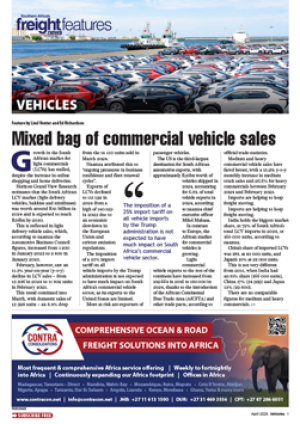1 January 2020 has been set by the International Maritime Organisation (IMO) as the implementation date for a significant reduction in the sulphur content of the fuel oil used by ships. The decision to implement a global sulphur limit of 0.50% m/m (mass/mass) in 2020 was taken by the IMO, the regulatory authority for international shipping during its Marine Environment Protection Committee (MEPC) meeting for its 70th session in London. It represents a significant cut from the 3.5% m/m global limit currently in place to ensure shipping meets its environmental obligations.
Regulations governing sulphur oxide emissions from ships are included in Annex VI to the International Convention for the prevention of Pollution from ships (MARPOL Convention). Annex VI sets progressively stricter regulations in order to control emissions from ships, including sulphur oxides (SOx) and nitrous oxides (NOx) - which present major risks to both the environment and human health. The date of 2020 was agreed in amendments adopted in 2008. When those amendments were adopted, it was also agreed that a review should be undertaken by 2018 in order to assess whether sufficient compliant fuel oil would be available to meet the 2020 date. If not, the date could be deferred to 2025. That review was completed in 2016 and submitted to MEPC70. The review concluded that sufficient compliant fuel oil would be available to meet the fuel oil requirements.
Under the new global limit, ships will have to use fuel oil on board with a sulphur content of no more than 0.50% m/m, against the current limit of 3.50%, which has been in effect since 1 January 2012. The interpretation of “fuel oil used on board” includes use in main and auxiliary engines and boilers. Exemptions are provided for situations involving the safety of the ship or saving life at sea, or if a ship or its equipment is damaged.
Ships can meet the requirement by using low-sulphur compliant fuel oil. An increasing number of ships are also using gas as a fuel as when ignited it leads to negligible sulphur oxide emissions. This has been recognised in the development by IMO of the International Code for Ships using Gases and other Low Flashpoint Fuels (the IGF Code), which was adopted in 2015. Another alternative fuel is methanol which is being used on some short sea services.
Ships may also meet the SOx emission requirements by using approved equivalent methods, such as exhaust gas cleaning systems or “scrubbers”, which “clean” the emissions before they are released into the atmosphere. In this case, the equivalent arrangement must be approved by the ship’s Administration (the flag State).
The new global limit will not change the limits in SOx Emission Control Areas (ECAS) established by IMO, which since 1 January 2015 has been 0.10% m/m. The ECAs established under MARPOL Annex VI for SOx are: the Baltic Sea area; the North Sea area; the North American area (covering designated coastal areas off the United States and Canada); and the United States Caribbean Sea area (around Puerto Rico and the United States Virgin Islands). Therefore, the existing Low Sulphur Surcharge raised by container lines in this case is still likely to be charged.
The effect of the low sulphur regulation is an impact on bunker costs as there is an average global variance of roughly USD250 per metric ton (Mt) between bunker fuel with a SOx content of 3.50% and bunker fuel with a SOx content of 0.50%. Major shipping lines have already disclosed that the formula and method of calculating the BAF rate will change as of 1 January 2019 ahead of the implementation of the regulation on 1 January 2020. In the case where container lines convert to low sulphur bunker fuel, it is estimated that the BAF rate could increase by as much as USD500 per FEU container in the case of reefer containers.
Char 1: Global average cost per Mt between bunker fuel 3.5% & 0.5% SOx content (Source – Ship and Bunker)










